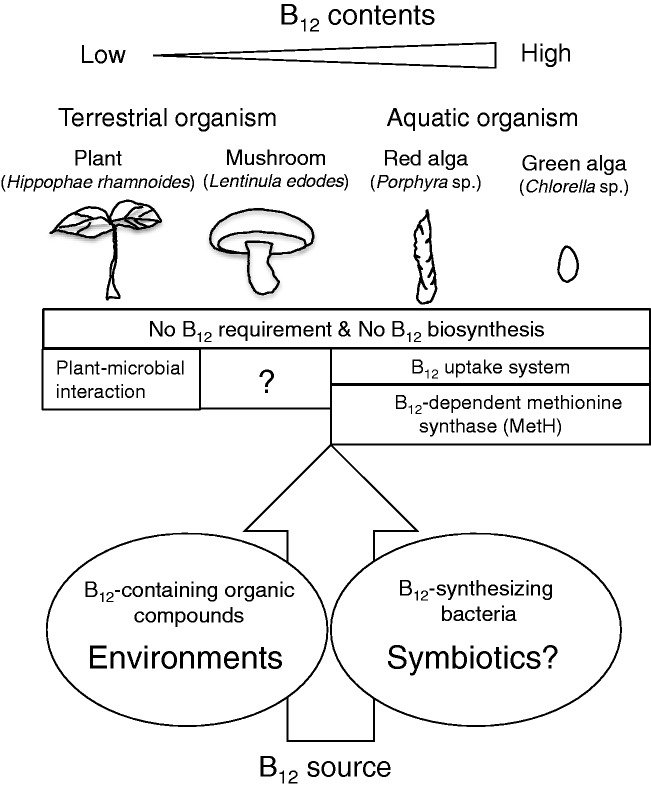Figure 5.
Vitamin B12 sources and microbial interactions in edible plants, mushrooms, and algae. Most plants neither produce nor require B12. Methylotrophys inhabit soil, water, and plants (aerial surfaces of plants) and some of them have B12 biosynthetic pathways. Plant–bacterial interactions play important roles in plant growth. Mushrooms cannot synthesize B12, but B12 found in mushroom fruiting bodies is derived from B12 sources outside the mushrooms, including concomitant B12-synthesizing bacteria. In aquatic environments, phytoplankton–bacterial interactions play important roles in algal growth because half of all algae require B12. Even in phytoplankton or microalgae without a dependence on B12 for growth, B12 accumulates and is used as a cofactor of B12-dependent methionine synthase (MetH).

